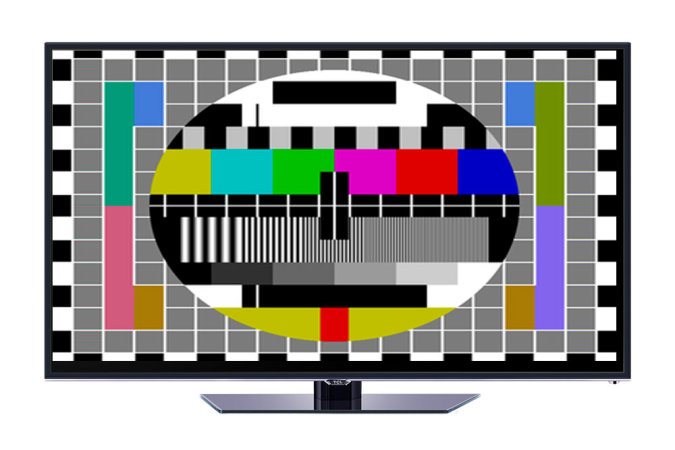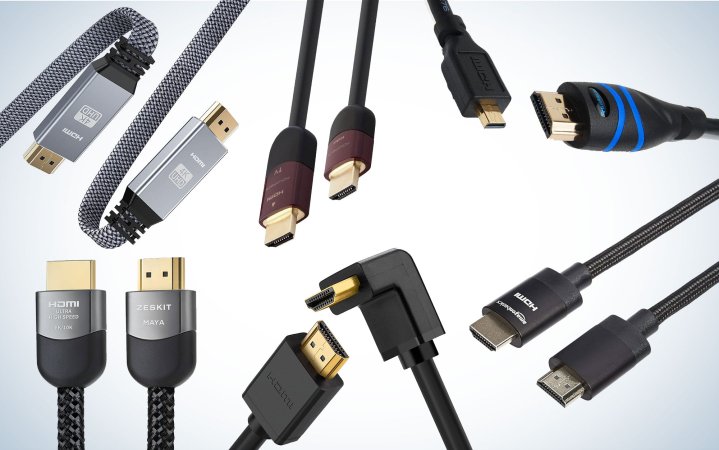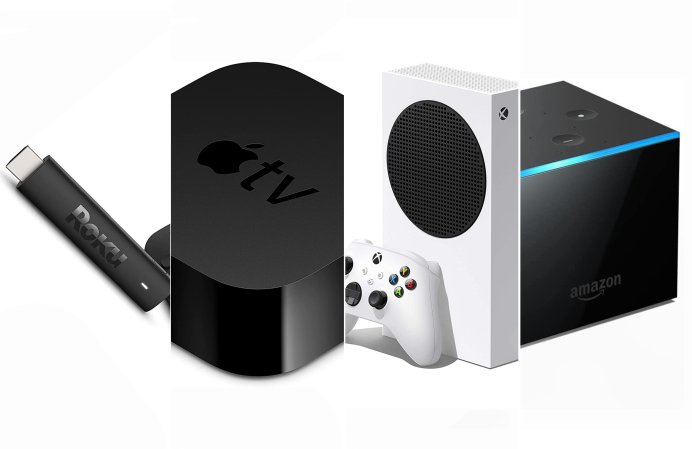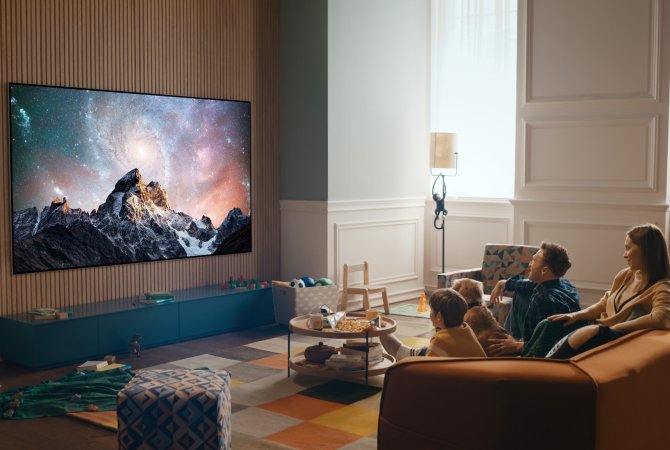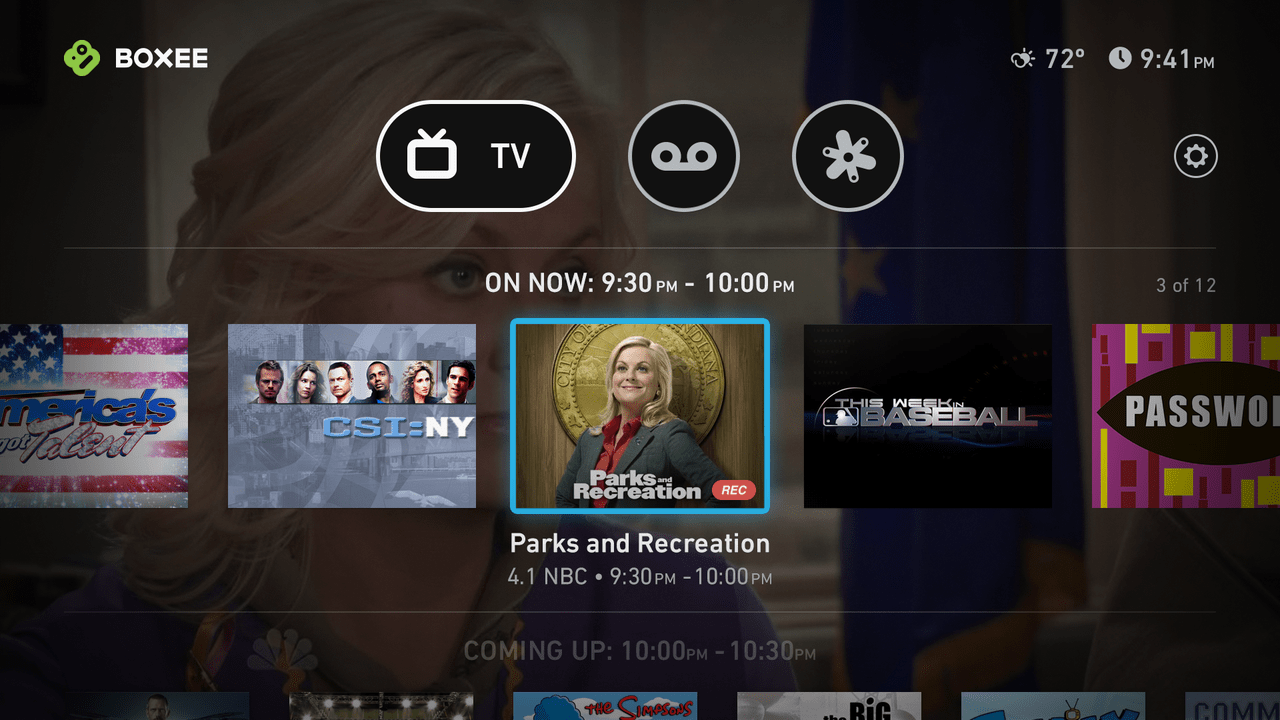

We may earn revenue from the products available on this page and participate in affiliate programs. Learn more ›
In 1994, Avner Ronen was in the Israeli Defense Forces, stationed, he says, at the first place in the IDF with an internet-connected computer. Somebody there showed him some nudie pics, doubtlessly downloaded with painful slowness, but nudie pics. “I immediately saw the potential of the internet,” Ronen told me, with about as much of a grin as I ever saw throughout our interviews. Which is not much.
That was the beginning of Ronen’s involvement with the internet, the start of the path that would eventually lead to a move from his native Israel to an airy, open, vaguely industrial office in Manhattan’s Flatiron neighborhood, complete with requisite friendly dog. Ronen is the founder and CEO of Boxee, a company that’s poised to release the Boxee TV, a time-shifting, place-shifting streaming media box that could truly free us from the tyranny of the cable providers–though Ronen is very careful not to put it quite that way.
He needs those tyrants, after all, and they are very, very wary of him and what he’s doing. That’s because Boxee’s history does not suggest a company that plays nice. This is a company that emerged from a hacker project that immediately made an enemy of Microsoft, a company that later infuriated NBC-Universal, Fox, and ABC-Disney by hacking Hulu. Yet today, this is a company that works with Comcast, of all companies, to protect the latter’s content, and a company that has no qualms about pondering new and probably more annoying ways to serve ads. And a company that hosts the mayor of New York City for pro-startup photo ops. All while still playing back your pirated, BitTorrented episodes of Breaking Bad. In full 1080p.
The Boxee TV could replace your cable subscription. At least, it’s the closest any box has come. And it probably had to come from a company like this one.
* * *
Here’s how it started. Around the turn of the century, hackers began to notice something very interesting about their gaming consoles, gamers and hackers being often one and the same. No longer were they weak, cheap, single-function appliances. The Dreamcast could connect to the internet and host multiplayer games. The PlayStation 2 had USB ports. And, most intriguingly, there was a new console from, of all companies, Microsoft. The Xbox, released in 2001, was incredibly powerful for its time, and, more importantly, constructed much more like a PC than other games consoles. It was the first to have a built-in hard drive (only 8GB, but still). It had a big bulky DVD-ROM drive, and an operating system very similar to Windows 2000.
In 2000, hardly anybody had a computer hooked up to their TVs. In 2001, every single Xbox gamer had one–mostly, without even knowing it.
Microsoft had some pretty sophisticated hack-prevention tools in the Xbox, but the idea of a common, inexpensive computer hooked up to your TV was too obvious to avoid the interest of hackers. Within a year, there were several individuals, all over the world, who were all trying to turn the Xbox into a media center. By the end of 2002, they had joined forces. Their project was christened Xbox Media Player, though it would soon be renamed Xbox Media Center. XBMC, as it was then and is still known, is the open-source media project to end all open-source media projects.
Back in 2002, it could play back pictures, music, and videos from the optical drive, from the hard drive, or from computers on your network. If you’ve had a Roku for years, it’s hard to explain how crazy this was, but ten years ago, that just didn’t happen. In 2002, you didn’t download video and you didn’t stream media of any sort, besides maybe photos. You rented DVDs, and you played them with DVD players. You could download videos from P2P services like LimeWire and KazAa, but the selection was spotty, connections were slow, and you stood a pretty fair chance of snagging a virus by mistake. Remember, BitTorrent had only been around for a year and was not widely used. This is three years before iTunes sold videos and six years before Netflix Instant Watch debuted. This is three years before YouTube even existed. Non-physical media was still riding horses, and XBMC was an illicit steam locomotive. Dudes on XBMC messageboards going by names like “d7o3g4q” crafted something better than the biggest tech companies of the age could even dream of. Apple, Microsoft, Sony, Google, Amazon: chumps. d7o3g4q: Not a chump.

On June 29th, 2004, the first stable release of XBMC appeared. Throughout the early- to mid-2000s, the open-source project attracted dozens of incredible developers, all contributing their own ideas and their own code, on their own time, for no money. By 2006, XBMC could play any kind of video or audio, from its hard drive, from bourgeoning internet sources like YouTube and Launch.com, or from other computers on the network. It had apps, for weather and web browsing. You could rip DVDs to your hard drive. You could snag TV and movie cover art from IMDb, or album art from AllMusic. You could restyle the whole thing, make it look however you wanted. By 2007, you could download BitTorrented videos right to your Xbox.
It wasn’t completely or even mostly legal, of course. It violated Microsoft’s terms of service–whether that’s illegal or just voids your warranty is unclear, but it is clear that Microsoft did not officially approve, since all XBMC Xboxes were banned from Xbox Live, the online multiplayer service. Then there were the more, well, obviously rule-breaking elements of the software. It could handle any of a dozen or more emulators–want to play Mario Kart 64 on your Xbox? No problem. Or any NES, SNES, Atari, Genesis, Sega Master System, or PlayStation game you wanted. It could also play illegally burned Xbox games. That’s the way most modders–the people who’d build one of these XBMC Xboxes for you–would advertise. They wouldn’t mention that this hack could revolutionize the home theater–they’d say, you can play Halo for free.
The content providers probably didn’t take much notice of XBMC, even though it could play pirated movies and TV shows, downloaded piracy being at that time not a huge deal. But later on, they’d look back and see that the project made it extremely easy to circumvent cable.
The other thing with XBMC was that it was horrendous to set up, by today’s standards. Microsoft had tried pretty hard to block this kind of thing–you’d have to either go through a complex software hack, by using a glitch exploit in certain games, or you’d have to crack open the Xbox and install a mod chip. When I had mine made, in the summer of 2006, I brought my Xbox out to an iffy part of University City, in Philadelphia, where a teenager with nerd skills far beyond mine cracked it open, hacked the software, installed a 200GB hard drive I’d brought with me, and loaded all kinds of goodies on it–emulators, ROMs, apps, skins, about fifteen full Xbox games–all for fifty bucks. All of a sudden I had a set-top box more advanced than anything on the market–hell, more advanced than anything on the market would be for another three or four years.
XBMC had all the potential in the world, but no editing at all. It was its strength and its weakness. All it needed was someone to recognize that.
* * *
Avner Ronen wasn’t new to startups in 2007, when Boxee began in earnest. After he left the Israeli Defense Forces, he created Odigo, an instant-messaging service, back in 1998, when he was still in Tel Aviv. Odigo was sold to Comverse, a larger tech company, with the aim of using instant-messaging over SMS texting, in 2000, but the company shut Odigo down two years later. Ronen stayed on at Comverse until 2004 as head of acquisitions, but he says his heart wasn’t really in it. In 2003, he was introduced to Windows Media Center–a half-assed but interesting interface on Windows PCs that was designed with big thumbnails and big text, what’s now known as a “ten-foot interface.”

The ten-foot interface is used for UIs on TVs–your Roku, Apple TV, your Nintendo Wii, even your cable service, those are all ten-foot interfaces, designed to be operated while you sit on your couch, ten feet away. But in 2003, the experience was primitive and awful. This is how you used to get digital content on your TV: you had a giant desktop computer and you plugged it directly into your TV, using a keyboard and mouse to control it. “It was a mess,” Ronen says. Then Ronen’s childhood friend Tom Sella–now the COO of Boxee–showed him a hack called Xbox Media Center.
Ronen, I think, saw the XBMC community in pretty much the same way Bill Gates did, when he was introduced to the project in 2005: as a largely unorganized pool of startling talent. Yuval Tal, now the the head of research and development at Boxee, was hand-picked from the elite XBMC developers. “We talked to most of them,” Ronen says, “and Yuval was the only Israeli.” Boxee is led pretty much exclusively by Israelis; in addition to Ronen (CEO), Sella (COO), and Tal (R&D), the company’s CTO is Roee Vulkan (he was Ronen’s instructor in the Israeli army), and its head of product is Idan Cohen, whom Ronen poached from Comverse when he left.
It’s a little hard to tell with Ronen whether he has fond memories of XBMC or whether he just saw it as an important but unrealized idea; like a lot of Israelis (warning: generalizations ahead, but I am allowed to make generalizations about Israelis because I am Jewish), he’s stoic and impassive and very, very confident, though he’s a funnier guy than he seems at first. About XBMC, he said “It was a great experience, but so hard to get.” Meaning, here’s something cool, but not something most people could ever use. Avner began thinking very seriously about something like XBMC, but that would be usable for normal people. “XBMC was for geeks, by geeks,” he says. “What we wanted was for the people, by the geeks.”
XBMC, as an open-source project, has a whole bunch of other projects based on it, since anyone can use any of that code. A few guys get an idea in their heads that they can make a version a little bit better, and they can take all the code they want, for free, and do it. To remain a part of the XBMC community, you have to use a substantial part of that code, and also contribute anything you do back to the stream, so anyone else can use it. Or you can “fork,” with the permission of those running the project, and head out on your own. When you fork, you no longer owe the community anything, technically, and you can work on your own product without having to collaborate with anyone else. But you probably want to keep tossing back minor help, so you don’t become an enemy of the project that spawned you–bug fixes, that kind of thing.
By late 2006, Avner had gotten together with Tom Sella, who had originally introduced him to XBMC (and, not coincidentally, his next-door neighbor in the Tel Aviv suburb when the two were in 8th grade), and Yuval Tal, the newly snagged XBMC whiz. The initial idea: a box using a new, simpler version of XBMC that would plug and play, like a DVD player, that would be easy for everyone to buy, set up, and use. They pitched investors and were widely rejected. “Investors said it would be too hard to operate, too expensive, too hard to monetize,” says Ronen.
So, without the money to make hardware, the brand-new Boxee team set out to make software–Mac software first, because 1) the team all used Macs, and 2) Apple’s media center software, Front Row–its equivalent of the always-underrated Windows Media Center–was garbage. This was around 2007. If you look at the Boxee blog from that time, you don’t see much chat about Front Row. Mostly what you see is Avner talking about technology, only some of it relating to what Boxee does. You’ve got his thoughts on BlackBerry v. iPhone, which, remember, was an actual debate in 2007. You’ve got his thoughts on Kindle and digital rights management. Also his thoughts on Kanye West v. 50 Cent, plane travel, and coffee. He is serious about coffee, as everyone who works in the startup scene is legally required to be. I don’t think anyone was reading the blog at that time.
But the Boxee team was working hard on a new fork of XBMC, a new kind of software that would be easy to install, easy to use, that would give access to what the nerds wanted while being easy enough to use to pass what Avner calls “the babysitter test.” His ultimate goal, which is what made Boxee so different from all the other XBMC forks, is for a stranger in your house to pick up a remote and get the wonders of the internet on the TV without ever being confused or intimidated. There’s a fair chance this is an impossible task.
* * *
Boxee for Mac launched in June 2008, to immediate nerd acclaim. Lifehacker loved it. CEA, the trade organization for the consumer electronics industry, awarded the company $50,000 (half of which Boxee donated back to the XBMC non-profit–they had enough prospective investors at that point to not really need to worry about money. Over the next three years they’d raise $28.5 million over three rounds of funding.)
In mid-June of 2008, the Boxee fellows hosted the XBMC Developer’s Forum in Amsterdam. Boxee, though it has made enemies over the years of some hardcore nerds who see Boxee’s mainstream ambitions as a betrayal, has stayed on mostly good terms with the XBMC community, in part because of events like this. Hosting the event was shrewd; Boxee at that time, though it had bigger plans, was based on the XBMC core, and the group that gathered in an Amsterdam pub (and “partied that night,” says Ronen, though he didn’t elaborate on how some of the world’s most accomplished nerds might celebrate in Amsterdam) were the best in the world at what they do. The Boxee team, at that event, contributed a bunch of code fixes back to the app stream, and also helped XBMC set themselves up as a non-profit organization, which gives them certain legal protections. They were the toast of XBMC. Then they forked.
Boxee wanted Netflix, Amazon, Hulu, Vudu, and all the other aggregators which were starting to offer streaming video. Boxee also wanted to thoroughly control their product, which you can never really do in a truly open-source project like XBMC. It’s tricky if you want to monetize, as well, since legally, anyone can freely release exactly what you released.
It was a necessary move, to separate themselves from XBMC. By that time, XBMC had gained in popularity, which was both good and bad–good because more people were aware of it, and bad because the software is only moderately legal, and in 2008 content providers (like cable companies and record labels) were much more scared and aggressive than they are now. (Which is saying something, because content providers are extremely scared and aggressive right now.) “Content companies are not very comfortable with open source,” says Avner. “We paid the price for some of that older stuff, so we were still thought of as trying to disrupt [their highly lucrative setup].”
* * *
In 2008, a couple of Boxee users and former XBMC developers in, Ronen thinks, North Carolina, managed to hack Apple’s kind-of-useless first-generation Apple TV to run Boxee. “At first we were surprised, because we didn’t think it could be done,” says Ronen. “But then it got a lot of traction with users.” Boxee, which had nothing to do with the project, had to be officially neutral, not wanting to get on the bad side of either Apple or content providers, but secretly they were thrilled. It gave them both the will and the means to go back to those hardware manufacturers who had originally rejected them and say “look! People really want this!”
And, says Ronen, Boxee on Apple TV “was never a great experience.” Installation was still difficult–not as difficult as the original XBMC-on-Xbox installation, but hard–and “the experience was not optimized, so it ran slowly,” understandable since the software was designed for Macs, rather than the underpowered Apple TV. But that makes an even stronger argument. If people love this so much, imagine how much they’ll love it when we do it right!
In 2009, D-Link, mostly known for routers and other wireless accessories, bit. It took almost two years of at times turbulent design work before the first Boxee Box would see release. Originally, Boxee worked with Nvidia in addition to D-Link, but they found that Nvidia’s Tegra 2 chip, a low-power CPU/GPU, wasn’t powerful enough or secure enough to do what Boxee wanted. Boxee ended up going with a beefier Intel Atom processor–a minute detail, a who-cares detail, but when you’re dealing with a company that is so of the nerd community, that kind of thing gets written about and commented on.

The Boxee Box was designed by Astro Studios, which would go on to create major products like the Xbox 360 and the Nike Fuelband, and the Box’s design is very peculiar indeed. “We told them, we don’t want another pizza-box, router-looking device. We’d like to make a statement with the industrial design,” says Ronen. It looks as though someone took a simple black cube and hurled it at the ground, rotating in midair and sticking one of its corners partway into the earth. Ronen calls it a “sunken box.” It’s very close to being an incredibly boring cube; instead, it’s asymmetrical and completely unlike anything else that plugs into your TV. When it was announced, people complained that it wouldn’t stack with their game consoles, cable boxes, and whatever else plugs into their TVs. They missed the point. “Yeah, it doesn’t stack,” says Ronen. This is supposed to be a conversation piece, and besides, you won’t need any other gadget for watching video. So who cares if it can stack?
The remote was a major victory. It is, I think, indicative of everything that Boxee does right–it’s perfect for both power users and novices. It’s a slim, light, skinny little thing. On one side is a directional pad, a play/pause button, and a back button. That’s it. You don’t need anything else, regularly. 19 times out of 20, those few buttons are all you need, so get rid of the rest of them. The remote’s stroke of genius is that on the flip side of the remote, you have a full hardware QWERTY keyboard–letters, numbers, symbols. Out of sight when you don’t want it, easy to use when you need it. It makes the remotes used by Roku and Apple TV look insanely inefficient. Both Roku and Apple leave you totally stranded if you want to search–for movies on Netflix, for videos to buy in the video store, for new apps.
One app it didn’t have, and has never had, is Hulu. Boxee may have broken with XBMC, but they hadn’t quite broken with the flavor of hackerdom that birthed them.
* * *
Sitting down with the perpetually Boxee-t-shirt-clad Ronen in one of Boxee’s glassed-in conference rooms, it’s easy to get sucked into a conversation about, well, whatever Ronen wants to talk about. He’s a very good speaker, despite his just-on-the-wrong-side-of-perfect English; he seems as if he’s giving you the whole truth, all the time, and I found myself nodding along with pretty much whatever he said. He’ll talk about money, for example–how much Boxee has and how much it makes–without hesitation. (In the announcement for the Boxee Box, he said “2012 we’re supposed to start making money. That’s what we told our investors.” Which is not something most CEOs would say.) He’s a concise and adept arguer, helped by the fact that we actually do pretty much agree on the problems and possible solutions in the industry. But he’s also subtly good at moving the conversation back to subjects where he’s comfortable, where he can talk about Boxee’s strengths and goals. I wanted to talk about Hulu, and I think he did not. I’m not even sure he was being cagey; I think he might just be sick of talking about the time his company screwed with the biggest names in content for a few months.
In 2009, as Boxee was designing the forthcoming Boxee Box, Hulu Plus didn’t exist–there were no Hulu apps for your phone, tablet, or TV, and it was completely ad-supported. Hulu started out as an experiment for the content providers, owned jointly by NBC-Universal, Fox, and Disney-ABC, to see if they could make any money off this whole “internet” thing. They were very scared of the internet, but thanks to the efforts of some talented managers and designers, they somehow created something really cool despite themselves. Of course, they also put tons of restrictions on it, and in 2009, one of the biggest of those restrictions was this: Hulu is for computers only.
Boxee, at the time, had a web browser, built on Mozilla, the platform on which the popular browser Firefox is also built. It’s never been particularly easy or enjoyable to browse the web on a TV with any set-top box, but Boxee always had the option, just in case. And that meant that you could navigate to Hulu.com and watch Hulu shows in their entirety–on your TV.

Hulu found out, and its owners flipped. They weren’t ready to move their internet experiment from the laptop to the living room. So they blocked Boxee from accessing Hulu. Boxee easily unblocked it. Over a period of a few months in 2009, you’d never know, in opening up your Boxee web browser, whether Hulu would work or not–Hulu was constantly blocking Boxee, and Boxee was constantly unblocking Hulu. “It wasn’t great for consumers, even though they loved [Hulu],” says Ronen. It turned into a David and Goliath battle. On one side, Boxee, a scrappy startup who just wants content to be free, and people to be happy with that content. On the other side, behemoth content companies who are depriving users of great stuff for reasons the readers of gadget blogs weren’t nearly satisfied with. It was old vs. new, corporation vs. startup, big vs. small. Boxee was going legit, becoming mainstream, but this was a hacker reflex. You say I can’t do this? We’ll see about that. Eventually, Hulu completely blocked Boxee from accessing its site.
It’s unclear whether this was a good thing for Boxee as a company. It got them lots of attention, at least at the kinds of places where a squabble between tech companies might garner attention. Readers of Slashdot, Gizmodo, and Engadget took notice of this ballsy young company. But it also might have done untold damage to Boxee’s burgeoning status as a media streaming startup a content provider could trust. Ronen argued that Boxee wasn’t really doing anything wrong; Boxee certainly wasn’t stripping out ads or allowing users to download Hulu videos or anything drastic at all, really; they were just allowing them to use Hulu in its whole form on a larger display. But Hulu didn’t see it that way.
I asked Ronen if he regretted the back-and-forth. It was the only time in our discussions that he ever seemed unsure of what to say. “It did create a misconception,” he finally said, that Boxee was a bunch of unfriendly hackers. But it also increased the company’s visibility, and probably helped contribute to Hulu’s eventual launching of Hulu Plus on a bunch of connected devices–though Boxee has never had a Hulu app. It’s now a major weakness of the product, though Ronen says Hulu (which is owned by but run sort of separately from its content-provider parents) has “always been pretty friendly to us.” Ronen seems pretty happy with how the whole thing turned out. “It’s hard to say if that was a bad idea,” he said.
* * *
The Boxee Box was released on November 10th, 2010, at a price of $199. It was significantly more expensive than its major competitors, Roku and Apple TV, and it had major software problems when it was released. I never did a review for PopSci, for example, because the thing wouldn’t connect to my home network for weeks, not until a firmware update. I wasn’t the only one with that problem; Ronen writes it off to incomplete beta testing. But it also launched woefully unready. No Netflix, no Hulu (well, never Hulu, but still), no Spotify. The launch was premature.
The core community, too, had its issues with the Boxee Box. A BitTorrent client that had been in an early version of the Box was removed before its release (“We wanted to work with media companies!” says Ronen), and there were significant restrictions put in by D-Link to stop users from running modified software on its hardware. That especially rankled old-school Boxee users, because Boxee at that point was still based on the XBMC core–a core that was created to run on blocked hardware. Users saw the Box’s featureset as concessions to the media industry, a betrayal of the “everything should be available” ethos of open-source.
And yet, in retrospect, Ronen thinks the Boxee Box’s flaw is from tilting in the opposite direction–it was too techy. It ended up “reflecting our own perceived needs, rather than designing it for mass-market,” he says. Most XBMC users try to do everything XBMC can do. “We could have made the most open-source box ever,” says Ronen, “but then we couldn’t have had Netflix and Vudu and Pandora, apps people love.” The struggle to balance the company’s roots in open-source hackerdom with its hopeful future as a major, legitimate player in the media industry means balance is a real concern. “Some people said we’re selling to the man,” says Ronen. “Fine. We can’t make everyone happy.”

The Boxee Box’s plan was to have it do almost everything that the hardware could handle, with very particular things left out so as to not enrage the content providers. “We made it almost too complicated, too powerful,” Ronen says. Boxee at that time still catered to the extreme nerd faction, the type who would write angry messageboard posts about how the Boxee Box doesn’t support three-terabyte hard drives or certain high-def audio formats. And yet the company spent lots of time making sure it could handle SMB, UPnP, DLNA, and lots of other acronyms understood by only a handful of people. “It’s easy to dig yourself in too deep,” says Ronen.
But the Boxee Box slowly gathered steam and became one of the best media streamers on the market. It got Netflix, and Vudu, and Spotify. It underwent several interface redesigns, each for the better. It got simpler, focused on what was important. It never became a blockbuster, but I started seeing it in the apartments of some of my nerdier friends. It did things no other player could do–namely, just about everything. Download an .MKV video from BitTorrent? Boxee will stream it from your laptop or from a hard drive plugged into it. You could watch YouTube videos or music videos on Vevo. You could watch Netflix or listen to Pandora. You could buy videos from Vudu, an on-demand service like Amazon or iTunes. It remains one of about three devices, period, that can use AirPlay, a feature created by Apple, of all companies, that’s one of the most exciting ideas in tech. Soon Boxee released an excellent iPad app that both controls the Boxee Box and lets your iPad serve as a media center in its own right. By 2011, the Boxee Box no longer scared my roommates. And in 2012, the company began experimenting with some secondary products that hinted at the next-generation Boxee Box.
In February, Boxee released the Live TV dongle, a USB stick that plugs into the back of the Boxee Box and gives it live TV powers. It came with a high-def antenna, which in cities like New York can snag a few dozen channels. Seems like not that big of a deal. In September of this year, Boxee released its first (seemingly) unrelated-to-Boxee app, called Cloudee. Cloudee looks like yet another “Instagram for video” apps; shoot a video, share it with whoever you want. They can view it from pretty much any device. Combine those two, though, and you have something pretty different–the foundation of the Boxee TV, the sequel to the Boxee Box.
* * *
The Boxee TV, announced today, is a flat, un-dramatic box that looks mostly like a Roku. (“We have enough challenges selling this box,” Ronen says. “We don’t want the shape of the box to be part of it.”) It has a high-def antenna built in, plus a new, simpler operating system, though it can still do everything the Boxee Box could. (The one detriment: the remote no longer has a QWERTY keyboard on the back. Ronen says people weren’t using it very often. But it will be missed.) The Boxee TV will be available on November 1st for $99–half the price of the Boxee Box at launch, and on par with the Apple TV and the better Roku boxes.
But, for Boxee, the most important part of the Boxee TV is wholly separate from the hardware: Cloud DVR. You can record up to two hours of live broadcast TV for free, or get unlimited storage for $15 per month. (It has two tuners so you can watch one thing while recording another.) That storage isn’t on a hard drive like a TiVo or any box you get from Comcast or Verizon; it’s all stored in the cloud, courtesy of Amazon’s hosting. Record whatever you want, as much of it as you want, and watch it anywhere, anytime. It’s called No Limits DVR, and it’ll be available first in the top eight TV markets in the US, with more to come.
You can record every episode of Seinfeld and have a marathon with your iPad when you get sick in a hotel room in Iowa. Watch last night’s episode of Parks and Recreation on your iPhone while on the train. Sure, it doesn’t support cable–the only option for that would be a CableCard, which is wildly expensive, huge, inefficient, and requires installation–but, notes Ronen, 80% of the top 100 shows and 95 of the top 100 sports events were on broadcast TV in 2011. It’s something nobody has really tried before–as much as I do not condone the word “disruption” in tech, it actually does kind of disrupt the entire idea of television. Time and place no longer matter. It’s all up to you.

* * *
I don’t know if Boxee will sell many Boxee TV units. The concept is a little bit difficult to explain in a few words, and what it does is so different from its competitors. Roku is an app device: oh, you know Netflix and Hulu and Pandora? Those apps, on your phone and computer? Now they’re on TV. Apple TV, too: hey, all that iTunes content? Now it’s on your TV. But Boxee TV is doing something different: it’s saying “hey, the way you watch TV? You can do it differently, and maybe better.” That’s a harder sell.
But what I like about Boxee, and about Ronen, is that I think they get it. They get that content is king. Roku has three hundred apps? Who cares. Can you watch the football game on it? Nope. What’s important to Boxee is that people can view the content they want, in the way that serves it best. That’s why they’re not messing around with second-screen stuff, like Microsoft’s SmartGlass, or shoving social networking into their products. They don’t think that stuff makes the act of watching video on your TV better. And everything about the Boxee TV is about making TV better.
I asked Ronen where the idea for the cloud TV came from. Most ideas in the tech world are an evolution of something else–oh, that’s cool, why don’t we do it a little better. But the cloud TV, there isn’t really anything like it. If you give him a chance, Ronen will talk about content forever. Content is everything for him. He saw a hole in the amount of content a streaming box could provide–live TV–and filled it, in the best way he could come up with. That doesn’t seem to be the way other companies in this field think. The Roku Stick, for example, is not about content. It’s just smaller hardware. Does that really improve your viewing experience? Not for Ronen.
* * *
Ronen said, more times than I bothered to count, that Boxee TV is not about cutting the cord. Some of his reasons make sense; if you’re a dedicated baseball fan, or you love HBO’s shows, the Boxee TV isn’t a viable alternative to cable for you. A cool addition, maybe, but not an alternative. But I suspect most of his opposition is out of a desire not to make content providers any angrier at him than they have to be. Because for those first signing up for cable, the new blood that keeps cable subscriptions going, they now have a choice. On-demand video, plus a DVR that’s more limited (it can’t handle cable channels like MTV or CNN) but also kind of, well, better, plus live TV, plus music apps and YouTube and Vevo? It’s a pretty persuasive argument. Ronen might deny that it’s a cord-cutting device, but the packaging on the box says “Save Up to $1,000 A Year, Reduce Your Cable Bill.”
The concept of a cord-cutting box as a revolutionary tool is absurd, of course. Something as entrenched and profitable as cable TV doesn’t just fall apart when something more interesting comes along. But for a lot of people, especially of the younger generation, this is the first box that really can do everything we need it to, with the possible exception of sports. Movies on Netflix, sports and broadcast shows live or on the DVR, cable shows through Vudu. Everything is where you want it, when you want it. That’s the future.
And it came from a company which has at various times hacked content providers, and encouraged protective legislation with content providers. That’s probably the way it has to be. Bigger companies could theoretically do this, maybe even do it better–Apple is rumored to be working on pretty much the same idea–but Apple runs iTunes, and needs content providers on its side. Microsoft and Amazon and Google are in the same boat. That doesn’t mean they can’t or won’t do it sometime in the future, but that complication does open the door for someone smaller, maybe a little less risk-averse, to try something big. And maybe become a major player themselves.

